Genre: Action Developer: WJS Design Publisher: Electronic Arts Players: 1 Released: 1992
After a rather unbalanced port quality-wise of the first game in the series, WJS Design was given the green light to bring the second game in the franchise to Sega’s 16-bit machine. With some gained experience working with the Genesis hardware now under its belt, surely what happened with Shadow of the Beast wouldn’t repeat itself as it began work on porting over this well regarded Amiga sequel. Does Shadow of the Beast II suffer from the same issues that Genesis port of the first game did? Read on.
Having freed yourself from the service of the Beast Lord, you enjoy a moment of triumph. Your monstrous Beast Messenger form is gone and your human body has been returned to you. Sadly, your victory is shattered all too soon. From your homeland, word reaches you that your baby sister has been taken away by Zelek, Maletoth’s mage, and that she is to be used to replace you as the Beast Lord’s messenger. Angered and remembering what you had to endure, you return home to begin the quest of finding your sister and bringing Zelek’s life to an end.
Graphically, the game fares quite well when compared to the original Amiga game. Though the impressive opening cinema is gone and there is some color loss (as one would expect), the detail in the graphics still come through. The animation, the settings that you run through, the characters… they look good and hold their own against the original Amiga sprites both in appearance and in size. Due the Genesis’ color palette, the game comes off with more contrast, losing some of the dark and foreboding (and muted) atmosphere of the Amiga original. But at the same time, it helps some of the detail stand out more.
Of note is what was done with the main character. Originally, he was a four color figure that looked rather dull against the more detailed backgrounds. But now he looks considerably better on Sega’s machine thanks to the added colors and touch ups he received. Also of note, is that where the first game had several layers of parallax going on at times, this game has pretty much two layers all the way through. As such, it doesn’t create quite the same sense of depth that the above ground stages its predecessor had. But overall, Shadow of the Beast II does well graphically as a port.
In the sound department, Shadow of the Beast II didn’t have quite as memorable a soundtrack as the first game on the Amiga. The music was far from being bad, it was simply more atmospheric at times and a bit less catchy. Rather than try to get the Genesis to mimic the Amiga’s tunes using one of EA’s familiar (and at times harsh) sound engines as was done before, more time was spent on recreating the music on the Genesis hardware. As a result, it’s much better in terms of sound quality and in how it captures the feel the original Amiga music created. It’s not as smooth or at times epic sounding as the Amiga’s music, but it’s considerably improved over the music from the first Beast on the Genesis, making the jungle beats, soundscapes, and such more enjoyable to listen to. Shadow of the Beast II also features more noticeable voice and sound effects than the Amiga original. This can be seen as a good or a bad thing depending on your tastes, but the point is that not a lot in the way of sound effects and voice was removed. They’re also done well and this all makes for a much better port in this area than the disaster that was the first game on the Genesis.
When it comes to gameplay, Shadow of the Beast II offers up more of what the original did… and then some. Like the first game, various items will be needed to get by certain areas and you have to get and use the keys, weapons, objects, and such in the proper order to get to the end of the game. If you don’t have what’s needed at a given time, you’ll be stuck and have to start over. So keep that in mind. An addition over the first game comes in the form of a basic inventory system. Where the Shadow of the Beast featured an “immediate use” system for things like potions and weapons (pick it up and you use it right then), this sequel allows you to hold onto four items at a time and choose when to use/switch them. This makes it rather nice in terms of holding onto things like health potions and such, but with only four spaces and the need to hang onto secondary weapons for a short while, it does result in some health potions still being wasted… and health in this game is like gold.
This sequel, like the first game, is hard. In fact, it’s harder in some ways. You can die in a matter of seconds, on top of the “do it in the right order” gameplay. Where the first game had yo u get hit and then gave you a moment or two of invulnerability, enemies now run into (and through) you, draining you of life steadily as they touch you. There’ll be more than one enemy on the screen at a time in spots as well and they’ll come at you from all sides. In other words, this game’s out to kick your ass in a hurry. However, unlike the first game, this one has difficulty settings that you can use. It only takes the game from hard to slightly less hard even on the easiest setting, but at least it’s there.
Where the first game allowed you to only punch most of the time, the sequel gives you a spiked ball on the end of a chain to use through most of the game, allowing your attacks to have a greater reach and hit multiple times. But it can only be used straight in front of you, so you’ll be in for a fight when enemies are closing in on all sides. More puzzles are in place this time around to impede your progress as well. Some are rather devious, while others rely on what various characters you meet have to say. As a result, you’ll have to think more in this game than in the one before it. And make sure you collect everything. If you can pick it up, it has a purpose.
Oh yeah, and here’s something that those who played the first game on the Genesis will love… this game runs at the proper speed. The hit detection is still a little spotty like the first game, but with everything running at the right speed, Shadow of the Beast II’s not unfairly hard due to technical reasons. That alone is a big plus.
So what’s wrong with the game? Well, one of its biggest problems are the mandatory hits. As mentioned earlier, enemies come at you from every direction and there are spots where you will get hit no matter what you do. This can lead to deaths that simply come off as forced and when you’re well into the game, it can be disheartening since feels like you didn’t have much of a chance to prevent it. Another prominent issue is that despite how hard the game is, it’s also very short. You can beat it in about 15 minutes once you know it well enough. So while the difficulty may lend the game some longevity at first, the game itself doesn’t really possess much once it’s been learned.
On the more minor side of things, as with Shadow of the Beast, there are missing and changed graphics. The cinema screens that come up between sections are gone and some of the little touches that gave the game a bit of character (like the signs around the acid pool earlier on) are missing as well. Another example of this is areas where the background graphics have been simplified. Some backgrounds no longer feature individual backdrops and instead just keep using the same twilight landscape background you see when you’re above ground. There are also some areas where a layer of parallax was removed, making the Genesis version pretty much two layers all the way through, while the Amiga had three in some areas. To go along with this, a few sprites were redrawn quite differently (like the big snail later in the game) for some unknown reason. None of these graphical alterations are game breaking issues and were possibly done due to memory constraints of some kind. But if you’re familiar with the Amiga original, you’ll notice their absence.
So what can we say about Shadow of the Beast II? As a port, the folks at WJS Design did a noticeably better job on pretty much all fronts compared to their Shadow of the Beast effort. It’s still missing things, but it’s a better port overall. As a game in general, it’s a hard-as-nails deathfest that’ll show you its game over screen repeatedly as you push just a little farther into it with each play through. It expands on the gameplay of the first Beast, creating a game that’s a bit deeper thanks to the puzzles and dialogue with other characters. Yes, it is painfully short and the mandatory hits can get frustrating at times, but it’s still a fun game in the end.
So while the Amiga version of Shadow of the Beast II had a few flaws and wasn’t quite as eye and ear catching as the original game on that system, this is a good Genesis port of a good Amiga sequel.
SCORE: 7 out of 10

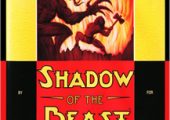
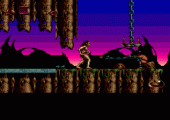
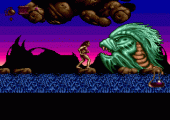
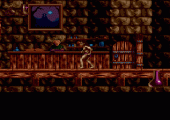
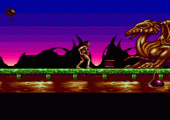
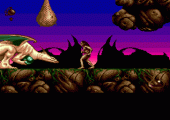
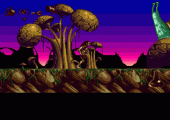
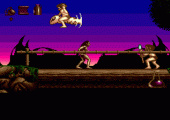
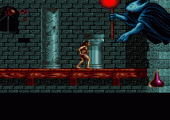
Recent Comments